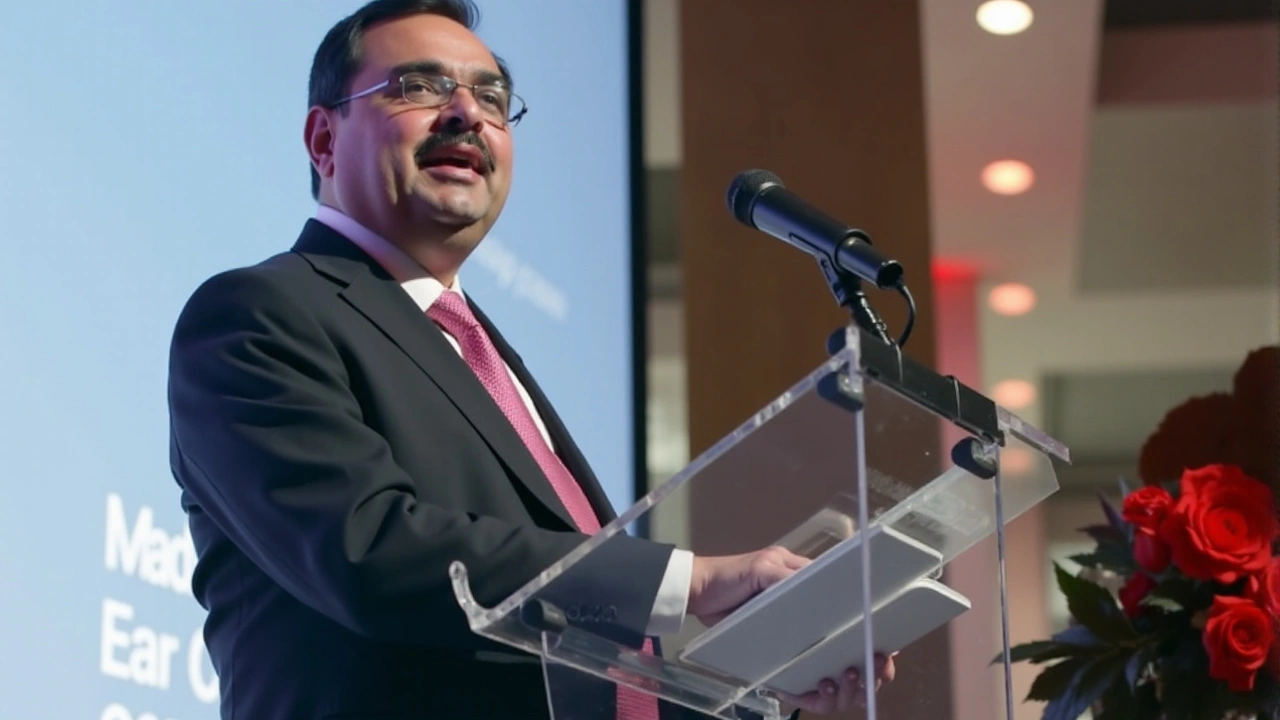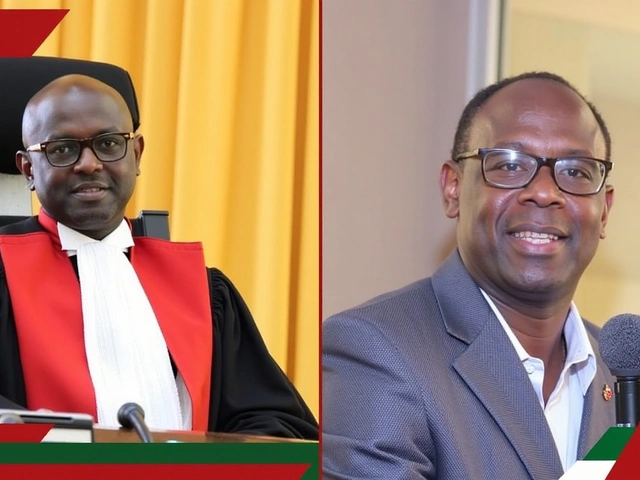Negotiations Over Adani's Power Line Projects in Kenya Continue
Discussions between the Kenya Electricity Transmission Company (Ketraco) and Adani Energy Solutions Ltd. remain active concerning the construction of three high-voltage power lines in Kenya. Despite earlier reports suggesting the contracts had been finalized, Ketraco CEO John Mativo clarified that several steps remain before any agreement can be cemented. This ongoing exchange is poised to determine the fate of a much-anticipated $736.5 million project, initially pegged at $1.01 billion.
Key Projects Under Consideration
The proposed venture involves constructing three major transmission lines. These include the 206-kilometer Gilgil-Thika-Malaa-Konza line, the 95-kilometer Rongai-Keringet-Chemosit line, and the 98-kilometer Menengai-Ol Kalou-Rumuruti conduit. These infrastructure upgrades are crucial for bolstering Kenya’s energy grid, which, despite recent improvements, still falls short of the country's growing demands.
Financial Terms Under Scrutiny
Adani, a major player in global energy solutions, has proposed a cost of debt at 11.5% and anticipates a 16% equity internal rate of return (IRR). Ketraco, however, is pushing for more favorable terms, preferring a 9.5% cost of debt and a 14% IRR. These financial nuances are critical as Kenya navigates its substantial debt landscape and energy-related financing needs.
Apart from Adani's colossal project, another proposal by a consortium including Africa50 and Power Grid Corporation of India is on the table. This joint venture aims to establish 273 kilometers of additional power lines, further illustrating the intense focus on Kenya's energy infrastructure enhancements.
Challenges and Public Perception
Despite the apparent allure of such investments, the negotiations have sparked scrutiny. Transport Secretary Davis Chirchir confirmed that the deal-making process is thorough and will undergo rigorous evaluation to ensure compliance with Kenya’s procurement laws. Public sentiment has also been stirred by these negotiations, particularly concerning transparency and proper protocol adherence.
Adding to the mix is Adani Group’s interest in operating Kenya’s largest airport on a 30-year concession basis. This proposal, too, has ignited a storm of public debate, with citizens and watchdogs questioning the transparency of such procurements. In their quest to modernize and enhance operational efficiencies, Kenyan authorities find themselves at crossroads, balancing economic incentives against scrutiny and public confidence.
Future Prospects and the Road Ahead
With a $5 billion financing gap looming for power line projects, Kenya faces significant hurdles in meeting its energy infrastructure needs. As negotiations with Adani Group continue and other proposals remain under consideration, the stakes are high. These projects are critical to ensuring a reliable energy supply, essential for Kenya’s economic aspirations.
The path forward will undoubtedly involve careful review and strategic decision-making. Stakeholders remain hopeful that a balanced and equitable agreement can be reached, ensuring that all parties benefit while addressing the infrastructure needs of the country. As the discourse continues, the outcome will reveal much about Kenya’s approach to foreign investment and its capacity to manage complex, large-scale projects efficiently and transparently.
Conclusion
In sum, the ongoing negotiations between Ketraco and Adani highlight the complexities inherent in major infrastructural projects. These discussions, marked by meticulous scrutiny and strategic bargaining, underline Kenya’s resolve to secure the best possible deal while ensuring that the nation’s energy demands are adequately met. As the dialogue progresses, the broader public and industry stakeholders alike watch attentively, eager to see how this critical chapter in Kenya’s development narrative will unfold.







Comments
Richard Berry
man i hope they dont screw this up. kenya's grid is already stretched thin and if adani comes in with those interest rates it's gonna be a nightmare for consumers. why is everyone acting like this is a gift when it's basically a loan with strings attached?
Sandy Everett
i get that infrastructure needs investment, but transparency isn't optional. if we're going to hand over national assets to foreign firms, we need public records, independent audits, and clear exit clauses. this isn't just about power-it's about trust.
J Mavrikos
the fact that two separate international consortia are bidding for this tells me kenya’s got leverage. why settle for 16% IRR when you can play them off each other? this isn't charity-it's a negotiation. push harder.
Stuart Sandman
adani? really? you know what happened in australia when they got control of ports and energy? same playbook. now they want airports too? this isn't development-it's a slow-motion takeover. they're not here to build infrastructure. they're here to own the future. and they'll charge you for the air you breathe next.
DJ Paterson
there's a deeper question here: who benefits from these deals? the people who need electricity? or the shareholders who want returns? i wonder if we're building grids for communities-or for balance sheets. the math might add up on paper, but does it add up in lived experience?
Nikhil nilkhan
bro, i’ve seen this movie before. foreign investors come in with big promises, then prices go up, maintenance drops, and locals get stuck with the bill. let’s not rush. let’s read the fine print. let’s ask the people who actually live near these lines what they think.
Damini Nichinnamettlu
why is everyone acting like adani is some savior? they're a corporate giant with a history of dodging regulations. if we let them run our airport and our grid, we’re handing over our sovereignty. this isn't progress-it's surrender.
Vinod Pillai
11.5% cost of debt? that's predatory lending disguised as infrastructure. kenya's public debt is already unsustainable. why are we giving a private conglomerate a higher return than our own treasury bonds? this is economic colonialism with a corporate logo.
Avantika Dandapani
i just want to say-thank you to everyone pushing for transparency. i know it’s easy to get excited about big projects, but real progress means protecting people, not just power lines. please don’t let fear or greed drive this decision. let’s choose wisely.
Ayushi Dongre
It is imperative to underscore that the structural integrity of any public-private partnership must be evaluated through the lens of fiduciary responsibility, national interest, and long-term sustainability. The current financial parameters presented by Adani Energy Solutions Ltd. appear to deviate significantly from internationally recognized benchmarks for equitable risk-sharing in critical infrastructure projects. A thorough, independent cost-benefit analysis-conducted by a multilateral body with no vested interest-is not merely advisable; it is non-negotiable.
rakesh meena
don't rush. check the fine print. kenya's future is on the line
sandeep singh
you people are naive. adani doesn't build power lines-they build dependencies. this isn't about energy. it's about control. and if you're okay with foreign billionaires owning your grid, then you're not a patriot-you're a tenant.